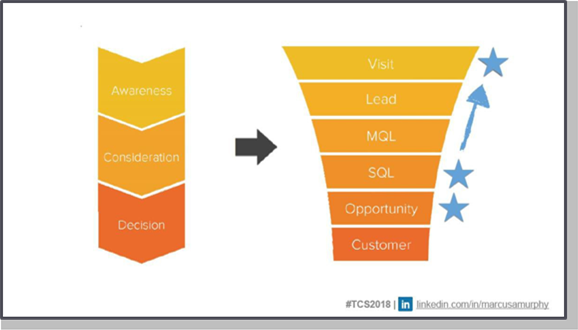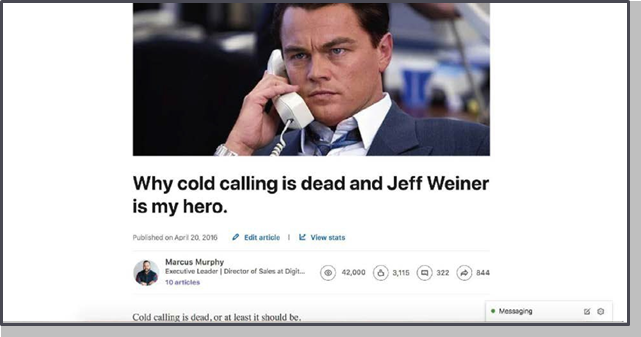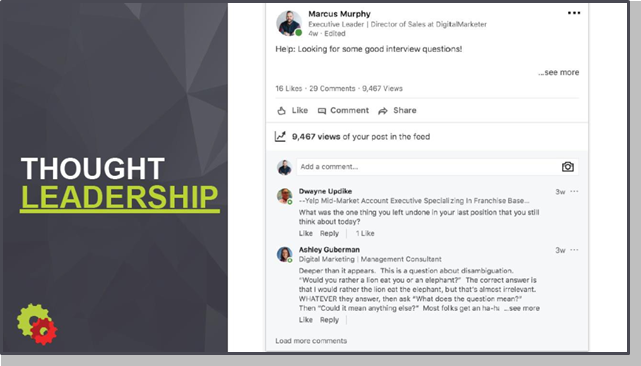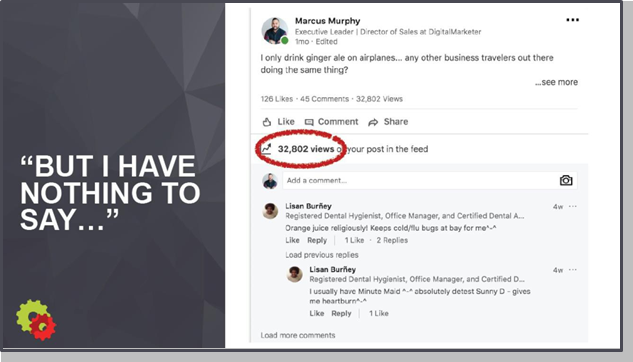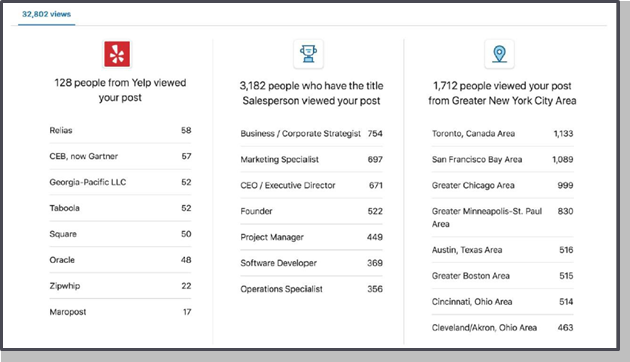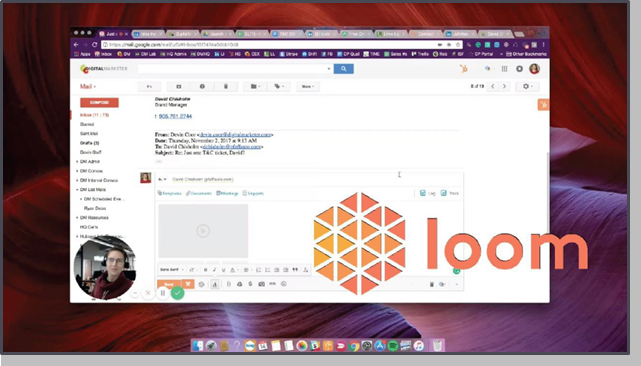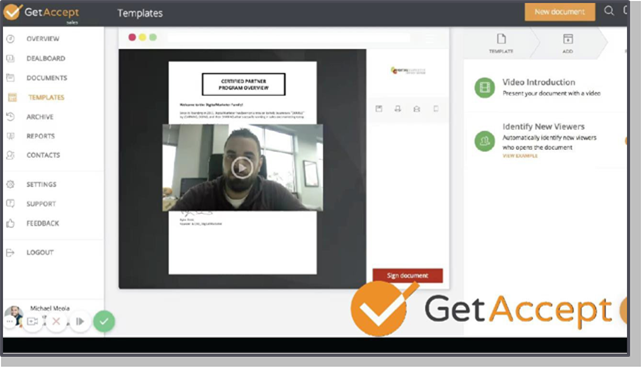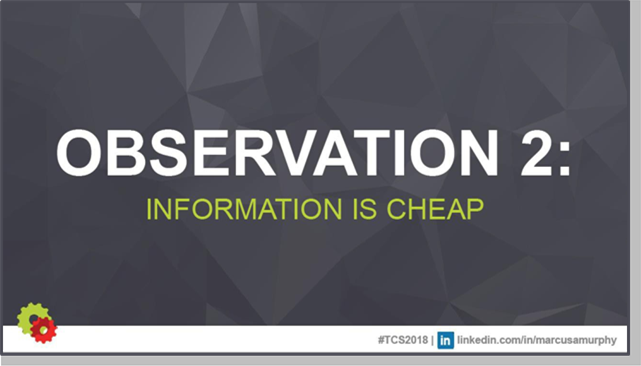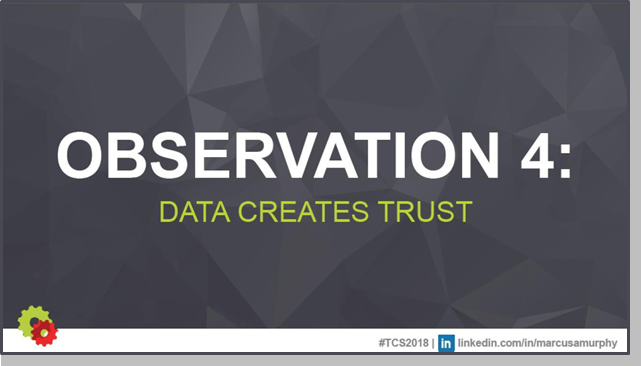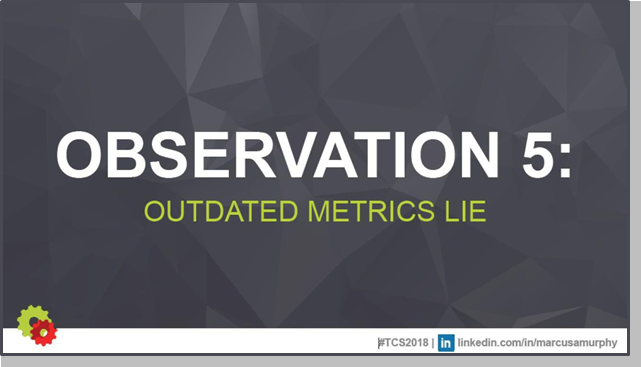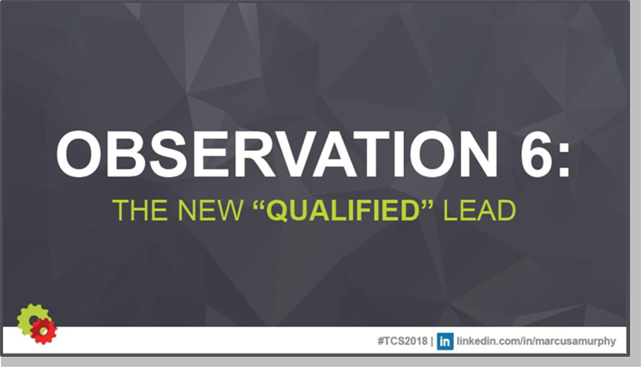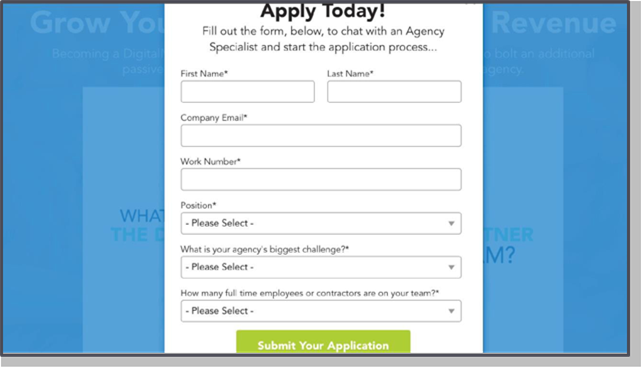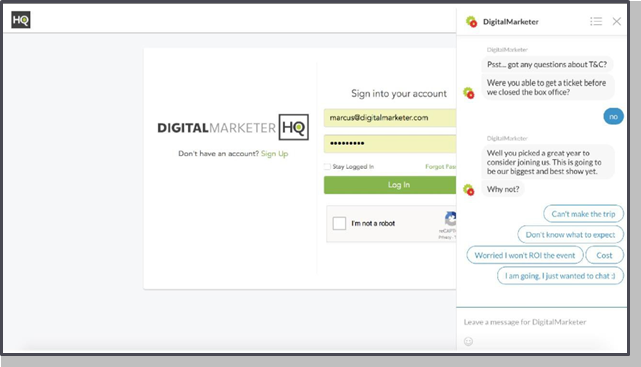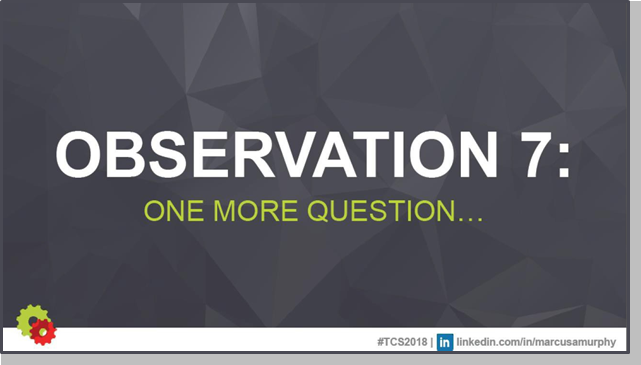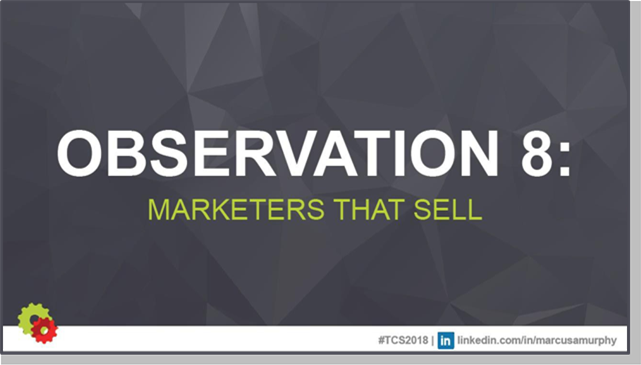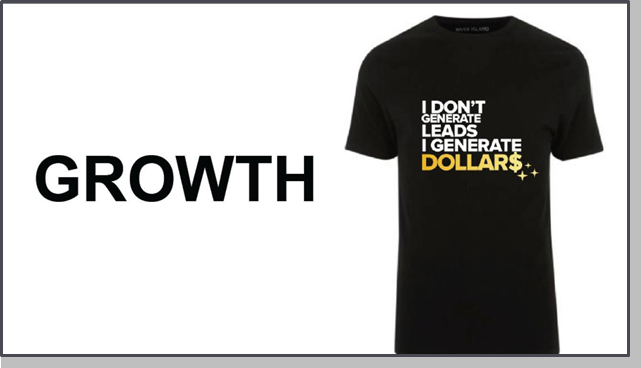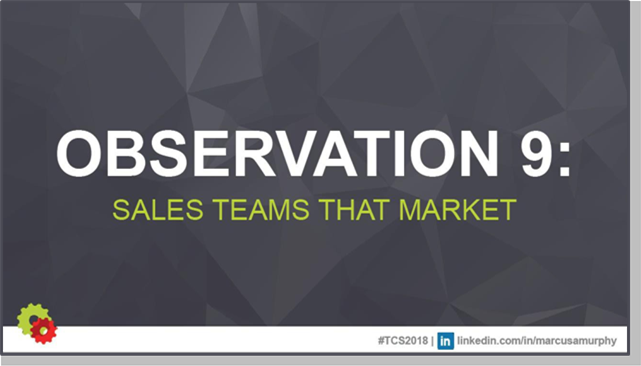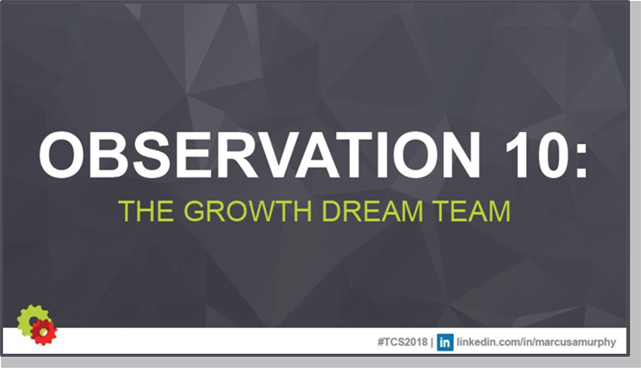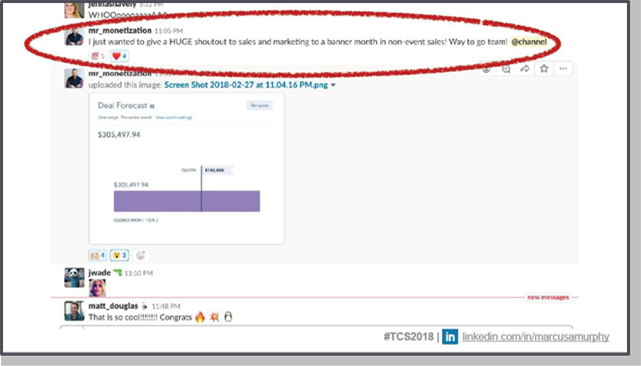Marcus Murphy
Marcus Murphy is the Director of Sales & Monetization at DigitalMarketer. Marcus is a sales expert who cares deeply about the flourishing and success of entrepreneurs. Marcus has worked for Yelp in San Francisco, going from start-up to multi-billion dollar giant. He has also worked at Infusionsoft as the Global Partner Development Manager where he developed & broadened new international markets through strategic partnerships
If you haven’t noticed it yet, the war between sales and marketing is over.
This is really good news. I mean have you ever had an argument with somebody, but then you still had to go sleep in the same bed? You know how fun that is.
What’s happening now is sales and marketing are actually cohabitating. That’s going to be a big part of what we discuss here, but for now let’s get started with the 10 observations I’ve had since working at DigitalMarketer that every marketer should know about selling.
Observation number one is that everybody likes to buy. But here’s what we’velearned…“Hi, I’m Marcus. Want to buy some stuff?” No. Because there is a disconnect between the buyer and the salesperson, and high-pressure sales don’t work.
How about this: “Hi, I’m Marcus. Do you want to buy some stuff?” No? Okay. “Why not?” Okay. “Well, what about now?” Okay. “Well, Come on. Come on. Buy some stuff.”
It sounds funny or ridiculous, but that is exactly how every salesperson that makes these outbound prospecting calls does it. It’s like, “Hey, you don’t know me. I have some stuff. Do you wanna buy it? It’s crap. I don’t know. Just give it some time and you can buy it. Give me your money. MasterCard, Visa, American Express. I’ll take it.” Right? There’s no thought.
What if the Plane Goes Down?
Here’s a quick story to illustrate this point. I was flying out for an advisory board meeting in San Francisco at LinkedIn. One of the things that was pretty amazing that happened is that I was, unfortunately, sitting behind a guy who was in the middle row having a conversation with the guy next to him, and I was witnessing was a train wreck. I just knew that a sales pitch was happening and it’s terrible.
We’re on the tarmac. We haven’t taken off yet and it’s going to be this unbelievable three-hour ride, which is an amazing time to have a sales conversation with a captive audience, right?
Well, this guy is sitting over here just dying against the window and this guy’s talking to him and trying to get him to desperately buy something. Here’s the question. What if the plane goes down? What industry do you think he was in?
Life insurance.
Oh. Life insurance salesman on the plane, middle seat. All of a sudden, I’m just watching it and I’m like, “Jack and Coke. Keep ‘em coming.” I can’t stand this. I have second person embarrassment, and I’m crawling under the table.
That’s what was happening and guess what? That has been the cadence for years and years and years with salespeople. What if the plane goes down? What if you die today? Man, that would make some urgent things happen for you if you can give me your wallet.
I’m sick of it.
By the way, I am a salesperson, and I’m sick of bad salespeople. I’m going to share some secrets today and some observations that I’ve had since I’ve been working at DigitalMarketer where I’m around people that are actually incredible salespeople.
No one likes to be sold, but everyone likes to buy
So there’s an amazing disparity there that if no one likes to be sold – okay, Marcus – but everyone likes to buy, there’s a fundamental problem with the way that we’re selling.
We have a few things that are coming down here. Basically, this is where salespeople have fit into the funnel for a very long time. We occupied the opportunity stage. We occupied the SQL (Sales Qualified Lead) stage, but I’m telling you we’re doing something new. We are going up funnel. We’re firmly planting ourselves right at the top of it. We’re having conversations up there. Salespeople are catching people sooner.
Be a Thought Leader
A few years ago, I wrote this article called “Why cold calling is dead and Jeff Weiner is my hero.” It got 42,000 views, 3,115 likes, and it was shared 844 times. I had people in Africa, my friends in South Africa saying like, “Hey, man, I just read your article. I just really wanted to talk to you about it.”
That was an unbelievable opportunity for me because as a result, LinkedIn flew me out. Jeff Weiner wrote on this post. All of a sudden now I’m speaking at LinkedIn, talking to their salespeople, etc. But the point is that salespeople at the top of the funnel need incredible content. They need to be out there writing or circulating information. That is what gets them into what’s called “thought leadership.”
There are 530 million people on LinkedIn. That’s a lot of people, but most of us don’t know what the hell to do with it.
Quick Tip: You need to equip your salespeople with an opportunity to be thought leaders by just engaging and writing original posts. LinkedIn’s incredible because they have an organic algorithm that allows people to see every person who has liked a page or commented or interacted with your comment. Then they see that on their page so all of a sudden, you get this incredible distribution.
For example, post something like: “Help. Hey, I’m looking for some good interview questions.” This works really well. Asking for help on LinkedIn posts is an incredible way to get engaged with 9,467 views to that question and 29 different comments of people saying things like, “This is exactly what I do. I ask these questions. I’m looking for these people. Here’s my entire script of how I figure it out. Here’s the best questions I have.”
This one was really crazy. People always say, “But I have nothing to say. Marcus. What would I ever write on there? I’m not original like you.”
I wrote “I only drink ginger ale on airplanes. Any other business travelers out there do the same thing?” 32,802 views. Do you know how many people wrote things like, “Oh, my gosh. I thought it was only me. I don’t even buy it. It’s like hot dogs at a baseball game or something like that. I don’t buy hot dogs to keep in my fridge, but when I’m there, I’m definitely going to eat one. Anybody have a solution to why we drink ginger ale on airplanes and nowhere else?” Yeah. Exactly. It’s magic.
Here are some of the insights that LinkedIn has. When you’re looking at those posts and you’re a salesperson, you also need data points to be able to see where it’s being distributed. 128 people from Yelp, 3,182 people, they’re business, marketing specialists, CEOs, founders, project managers. Do you think that’s pretty powerful information to know? Yeah. It is. Absolutely.
You can also see where they are geographically. Where are people finding you? How are they engaging with you and how can you engage with them? That’s perfect, and now you understand why you don’t have to be like, “Hey, I don’t really have a lot of information. I don’t have that stuff.”
DigitalMarketer has a blog. Go there. Take our stuff. Put it online. Sound good? That’s a selfish plug right there, but if you don’t have information, go find good information and recirculate it. Being a thought leader isn’t coming up with original content all the time because you’ll get exhausted. One piece a month is what I challenge my team to do.
I also challenge them to go read. Find incredible people who are already talking about smart stuff and get it out there and make sure it’s what people on LinkedIn, who are your prospects, want to read.
Yesterday, I was listening to Jasmine Star and she said all marketers put up hashtags. They’re like #DigitalMarketer and #marketing, and they’re like, “Why do I only have marketing people following me?” Find out what your prospects or your actual avatar or your customer wants to read and then distribute that content.
Personality wins. Being able to have conversations earlier is great.
Loom is an incredible way to personalize people’s messaging and be able to add videos and take screenshots.
You know what this person did here? She actually connected with somebody because the guy wrote back and said, “Oh, a video just for me. I feel so special.” Then all of a sudden that turned into an opportunity that he was like, “I’m coming to T&C now. This is so cool. You guys are so personal.” Different type of salesperson, right?
Then Michael was using GetAccept, which is a platform that integrates with HubSpot. They basically send out video, One Touch agreements, and that’s really something that everybody should have. If you’re not using video in your outreach right now, you’re losing. It is going to be the future at personalization.
People don’t break up with people they know and they’re super close with, but they can absolutely break up with a robot or an email or a text message. They don’t care about any of that stuff. Today the strategic, helpful empathic salesperson wins. They just do. You’ve gotta care.
Information is cheap.
I know that’s mind blowing. It’s crazy. It’s simple. I think it’s crazy simple, so here’s the thing. Salespeople were told that they need to send information. The only thing was that they left this out: you have to add value, it has to be actionable, and it must move them closer to the sale.
Not only do you have to add value, but it has to be actionable. If it’s not actionable, then there’s really no reason that anybody would ever get back to you. Make it actionable and you move them closer to the sale.
Then here’s the thing that really is a pet peeve. Lazy salespeople are annoying, because they don’t do the extra work that it takes. There’s no point in sending people information that they could find themselves because they absolutely will. So if you don’t have any additional insights to add, then you’re not a good salesperson. You are not. You’re lazy. Stop it. You’re creating a stigma.
Make sure that you have additional insights that add value for the prospect who is looking at all this information because here’s the actual myth to this whole thing: Buyers are so informed that they don’t need salespeople anymore. Have you heard that before?
Most of us feel like, “Wow. We’re the most informed generation of all time,” but here’s what else we are. You’re deeply, deeply uncertain and stressed out in the sales process, in the decision making process, because it’s money, it’s time.
And if you have a complex solution, 6.8 people on average are in the buying decision. 6.8. You think it’s hard to get one person to say yes. Typically, when you send something over to someone it’s circulated within their whole company. There’s a bunch of decision makers that have to do that. It’s just getting harder and harder and harder to get a yes and get somebody to buy.
Piling on more information and options just makes things harder. You have to keep it simple so here’s the thing, salespeople: Stop forcing your process on people. If somebody is informed and marketing’s doing a great job and they go, “Hey, I just wanna talk to somebody because I’m trying to figure this thing out,” and then you force them to go through your process like, “Hey, you know what? I would love to talk to you about that and take your credit card, but first, why don’t we have an hour and a half long webinar call.” You’re going to lose the sale.
Stories sell.
I’ve always looked at it like this. Great marketers are the composers of what we do. They tell incredible stories.
Salespeople think they’re rock stars. But they think they were born that way. Every salesperson thinks they’re that. It’s a cockiness, confident thing, but I’ll tell you what they need. They need composers. They need incredible people who can write scripts.
Two of the best salespeople in my mind are Richard Linder and Ryan Deiss. They write the music to my orchestra all the time because they know how to formulate a conversation. Then they let us use that as the baseline so that we can go off on these cool jazz improvisations. But you better be able to make it back to the music that was written for you. You should or you’re just a jam band.
Great stories aren’t told. They’re retold.
They’re retold and they’re retold and they’re retold by people that need great stories to tell. Salespeople need great stories to tell. If you’re a marketer, you are probably an incredible storyteller. You can make people feel emotionally connected to the product, service or business. What is Apple’s slogan? “Think different.”
Don’t you feel like you’re a part of something when it’s “think different?” That’s an incredible story to tell. Do you think a salesperson came up with that? No. No. No. The composer came up with that. His name was Steve Jobs.
Data creates trust. It just does.
It creates trust because no one trusts salespeople. Nobody does. Why doesn’t anyone trust salespeople? The following probably comes to mind: sleazy, agenda, pushy, liars, high pressure, pests, manipulative, they don’t listen, and they don’t care about the buyers needs either because if you don’t listen, you don’t care.
Most salespeople use high-pressure tactics and they’re pests because they feel like they have to peck you to death. “I’ve got to follow up with you 27,000 times because I’ve got to make sure that I reach my quota. I got to get it. I got to get it. It’s … Hey, whatever. It’s important to me. It’s not important to you, but I’m gonna make sure I stay on top of it.” Meanwhile, they don’t even know or use their own product.
This is the stigma that every salesperson has to overcome, right? But it doesn’t have to be the reality. It doesn’t have to be the final destination. You know what actually helps it? It’s data. Data cuts out doubt and creates trust.
Data is incredible because it actually creates a new narrative with buyers where they don’t have to trust your relationship or think about how cool you make them feel.
Outdated metrics lie.
We’ve created new metrics at DigitalMarketer. So when we sit down and we’re talking about “How do we know if we’re doing well on the sales side,” we created a new CPC acronym for you. Not cost-per-click, you marketers.
Cost Per Conversation.
It’s looking at it by a product and going, “Okay, so if I know we made this much money this month. I know we’ve had 800 conversations on that product. I know that we make $80 per conversation. Okay. Cool. That’s $80 per conversation so I know that every single time somebody picks up the phone, it’s 80 bucks for that rep.” Seems like pretty valuable information.
It’s especially valuable when you add this one: Revenue Per Conversation.
That’s where you would sit there and go, “Okay, well, great, so our goal is $100/RPC.” So if you’re not reaching $100 per conversation, you’ll want to go through the three Ps to make sure you’re doing what you need to be doing.
The 3 Ps are:
- Are you having conversations with the right Person (both sides: rep and avatar)?
- Are you having conversations about the right Product?
- Are you using the right Process?
Qualified leads can come through automation.
There are a number of ways we create qualified leads at DigitalMarketer. Here
are a couple examples:
- Qualified Lead Through Application Process
Here’s the application for our certified partner page. When you get there, this
will pop up.
If you want to submit your application, you’ll need to answer some qualifying questions: What is your agency’s biggest challenge? How many full-time employees? When the application is submitted, a task is created for a salesperson to follow up.
- Question Window Using Bots
Our marketing team is pretty smart because they found a way to produce new marketing qualified leads. People hop in right here to DigitalMarketer HQ, and as they’re going into their certifications, look what it says? “Psst. Got any questions about T&C? Were you able to get a ticket before the box office closed?” No. “Well, you picked a great time to consider joining us.” Then they give options there. They are literally qualifying now right through using bots.
This is exactly what we use on our site. We’re using it on the marketing side, and then we’re absolutely using it on the sales side.
You have to be willing to go and have a sales conversation where people want to have it. If you’re pounding the phones, but you’re only getting voicemails, leave voicemails, but you also better get over on SMS. You better be on Facebook. You better be on LinkedIn. You better be somewhere where Millennials are having conversations because that is exactly where it’s happening.
We had a massive realization that we had a full team of people that were getting customer service tickets every single day from people that wanted to talk to them. They were reaching out to them because they needed support. We’re sitting there trying to figure out like, “Man, we’re out here spending how much money on leads? We’re spending how much on acquiring a new client?” Like, “Okay, so we’re getting 1,400 people that are reaching out to us on a weekly basis that want to have a conversation,” so we started asking ourselves different questions. How are we starting or extending those conversations?
We started something really simple: Question of the month.
Your customer success team and support people should have a question of the month and they are always different based on what’s going on in the business. This was the last couple months for us:
- Do you have your ticket for T&C 2018 yet?
- Did you see our big announcement yesterday?
It’s no longer the metric of like, “Close those tickets.” Most customer success teams are sitting there trying to create FAQ pages because they don’t want to talk to anybody anymore. Instead, you can have your customer service reps ask one thing after they resolve each customer problem. “Hey, I can’t log into my account.” “Awesome. I just took care of that for you. Do you have your ticket for T&C 2018 yet?”
It’s different than just being like, “Hey, how’s it going?” Anybody been into a retail store and you walk in there and what do they say? “How can I help you?” What do you say? “Nah, I’m just browsing. I’m good. Thank you.
Don’t talk to me. Don’t make eye contact. I don’t want to look at you.”
If you ask a specific question, “Hey, are you a 15½ 34 shirt?” “Well, actually I am.” “Oh, just that Hugo Boss is having this really cool sale over here and that’s a perfect shirt for your body type.” Different engagement.
Here’s another question. Did you see? “Did you see our big announcement yesterday?” Did you see the big sale we’re running? These are conversation starters so you’re not just closing tickets; you’re extending the conversation with just one question. Let them be excited about it.
Marketers are selling now.
One of the biggest things that I’ve seen at DigitalMarketer this year is the alignment of sales and marketing. On Monday mornings, Justin Rondeau and I have a standing 8:30 meeting because his marketing team and my sales team need to figure out how that works top down. But we sit around and we try to figure out what are the things we can do to grow our revenue as a team. Every company needs to do that to stay in business.
A lot of things are changing, like this shirt…
There’s a humongous marketing team out there and this shirt came up. I remember seeing this person who does acquisitions wear this shirt. I was like, “This is changing. This marketer is changing.” It’s kind of a weird shirt because it feels very salesy, but the ownership has changed. “Hey, I’m a marketer and I’m actually responsible for growth.”
That is a change.
Not just in like, “Hey, go to a landing page and sell it,” but “Hey, I’m actually responsible for generating money that’s going to help us grow as a company, and when we grow, we serve our mission and we help more people.” That’s the connection. It’s fantastic.
Sales teams are marketers now.
When I came to DigitalMarketer, I was basically figuring out what the DNA of DigitalMarketer was? How do I take my sales background into a marketing company and what do my people look like? What do they sound like? If I would’ve brought the sales team in from Yelp, it would have been a bulldozer. We would’ve ruined the reputation of DigitalMarketer because it’s all outbound, 90 dials a day. Even on the inbound side at Infusionsoft, it would’ve been a little bit different because that’s SAAS, and the model for SAAS is like popular and it also has like a BDR outbound aspect to it, and I knew that just wasn’t us.
What I decided to do was start to pluck people out of customer success. We started finding people that have been talking and having conversations with our clients every single day and know all of our products and then teaching them how to have sales conversations. I’ll tell you what happened is that our marketing training kicked in. I was like, “Okay, so you’re kind of a salesperson. You’re kind of a customer success person. You need to be inside of our courses. This is HQ. When they walk in, they can go, ‘Okay, cool. There’s conversational funnel mastery. Here’s Ryan teaching one of those.’”
In the first two weeks when they make the transition from customer success to a sales team, they’re going through and watching all of our certifications, taking our quizzes, taking our tests before they ever hop on the phone.
Now, they know our products, so they can be authentic, and they’re really incredible at marketing now too. I even have salespeople that build funnels.
The growth dream team = an aligning and a cohabitation of marketing and sales.
It is an 8:30 a.m. Monday morning meeting with Justin Rondo every single time, every Monday, without fail to make sure that top down, we have an aligned goal on how we want to grow the company. Justin Rondo, the Director of Marketing for DigitalMarketer, is the growth team leader. That’s not me. I’m monetization. You think like, “Oh, growth team. Sales.”
No. Justin is sitting around thinking to himself, “How do I monetize all of our assets? How do I take those buckets that are on their side and turn them up every day and who can I tap strategically to make sure that it’s an alignment between Dev, between sales, between support?” He’s running that show and every Monday morning, we sit around and we talk and he goes, “Hey, so what do you guys need? What’s the gap this month?”
We do a gap report on Monday mornings, the first Monday of every month and we talk to each other and we say, “Okay. I’ve got this much in my pipeline. This is my goal. Justin, what do we need to do to get from here to there? What is the gap?” Then we create a whiteboard session that’ll rock your world about how we’re going to do it. We get creative. We send emails. What we are sending emails for isn’t to go to a landing page to buy. We’re sending emails so that people will pick up a conversation.
You know what I teach people now, which is the scariest thing to think? I have these young salespeople that come in and I’m teaching them how to have human-to-human conversations. It’s insane. It’s like, “Hey, why did you call me and leave me a voicemail? Text me.” It’s like, “No. Go talk to another human being. Please. Have a normal conversation.” Get off your script and go, “Hey, how’s your day going? I’m Marcus.” That’s something I have to teach now.
We also celebrate things together. Below is a screenshot of a shout out to one of our sales teams who had a pretty good month. $305,000 nonevent revenue is a pretty good month for those four people and one of the things that we said is that we were looking at it and going, “Hey, guys.
Congratulations. Huge shout out to sales and marketing.” I don’t want to walk up on stage and accept the trophy without them anymore. I’m sick of that. Salespeople get all the credit. They just do, but when your teams aren’t aligned, that’s what’s going to happen.
We win together. We lose together. We are no longer pointing fingers at each other because we have a new thing in our company, which is called ultimate ownership on these teams.
You know what the war was between sales and marketing? Your leads suck. You’re not converting and you suck. That was the whole thing for years and years and years, but you won’t hear that on our floors because what happens now is we sit there and go, “Hey, man, have I done everything I can do before I go talk to anybody about what the gap is? Have I sat there and followed up? Have I done outbound prospecting? Have I connected? Is my pipeline full?
What have I done this month? Am I just sitting around waiting on a lead to fall out of the bottom of the funnel? Or am I being proactive? Am I owning it?” Our teams get along because nobody sits around and complains about the other person because they know they have more control than any other team has because they’re working together.
Let’s Sum It Up
Here’s the 10 things again…
Everyone likes to buy, information is cheap, stories sell, data creates trust, got to have it, got to have it or else everybody out there, especially the salespeople, are going to just be another stigma, another walking stigma. You’re putting every salesperson, including yourself at a disadvantage if you’re just walking around with no data, but you’re just an awesome, shaking howdy guy and everybody likes you.
Outdated metrics lie. Change it up. If you’re going to start monetizing conversations, you better have new acronyms and new ways to measure it. There’s a new way to qualify leads so we have bots now. We live in that world. They qualify. We can add that in. People come to your page. It’s top of funnel. You’re qualifying and looping them in with a human being.
Always ask one more question. It’s not about having less people talk to you.
Let them in. Get them to have a conversation with you and you continue to give your team or yourself one more question to ask to keep that conversation going, but make sure that it’s specific so they don’t go, “Huh?
I’m just browsing.”
Marketers should sell. They should be connected to revenue. Salespeople should absolutely know marketing. They should get out there. Do all these great certifications. I mean come to these types of events. Send your salespeople to marketing events so they understand how it all works and what the connection is. Cohabitation.
Then finally, we win or lose together. Cohabitation’s a whole new world. If you’re a salesperson, if you’re a marketer, I absolutely believe that things are gonna change for the better.


